Perth, 25-26 November, 2019

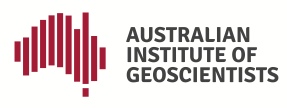
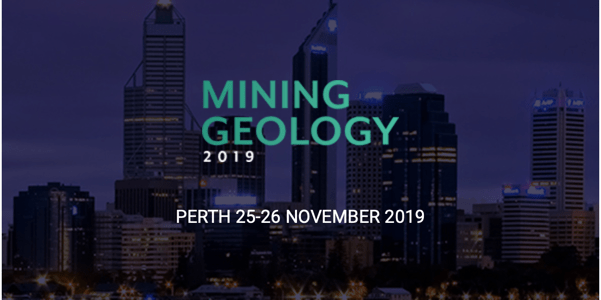
Mining Geology 2019 conference program finalised!
With the increasing pace of change and emerging technologies in the mining industry, AusIMM’s Mining Geology conference will focus on the future of our industry and the impacts on mining geology and the entire mining value chain.
Get a taste of what will be covered at the 2019 Mining Geology conference by viewing the program abstracts now available online.
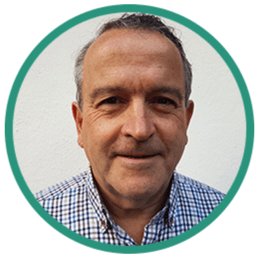
SPEAKER SPOTLIGHT
John Ashton
Consultant, Boliden Tara Mines
We recently asked John about the biggest technological advances being implemented and how this is influencing key metrics. John said “In mineral exploration I believe an important growth area is the use of seismic surveying to define regional, local and near mine structural targets….continue reading>
FEATURED KEYNOTE SPEAKERS
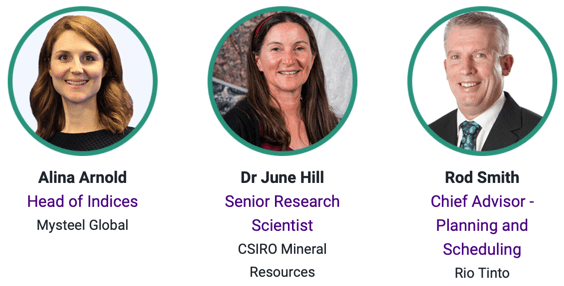
Do you want to continue receiving updates about Mining Geology 2019?
Subscribe to receive the latest updates about this conference because as of July 1 we are changing the way we email you. Subscribe here
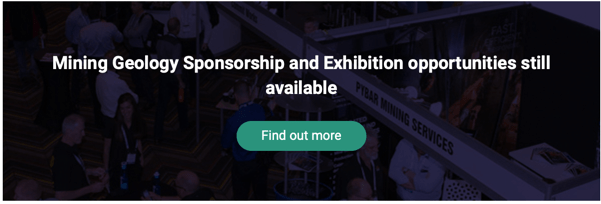
AIG is pleased to partner with AusIMM in presenting this conference.
The European Federation of Geologists announces 2018 employment survey results
EFG announced the results of the first employment survey of European geoscientists conducted last year. The objectives of the survey were to:
The survey results are presented as a two page report, available here.

Policy makers and geoscientists gather in Delft to exchange ideas on the contribution of geoscientists to the energy transition.
The EU-funded CHPM2030 project has organised its final conference in the framework of the EuroWorkshop “Geology and the energy transition” on 23 May 2019 at the Science Centre of Delft University of Technology (the Netherlands). Co-organised with the Royal Geological and Mining Society of the Netherlands (KNGMG) and the European Federation of Geologists (EFG) The aim of this event, which gathered 100 participants from 24 countries, was to provide insights into the energy transition and how it affects geosciences.
The conference’s first session aimed at setting the context by providing an overview of the policies adopted to encourage the energy transition. KNGMG President Lucia van Geuns opened the EuroWorkshop with an overview about nowadays global energy context stressing that no ‘one size fits it all’ approach to the energy transition exists. Mrs. van Geuns particularly highlighted the opportunities arising from system integration technologies where geoscientists play a major role, ranging from the production and storage of green hydrogen in existing platforms and its transport through existing pipelines, to the CO2 transport and storage in existing fields.
In his keynote speech, EFG President Vitor Correia highlighted two factors that may accelerate the energy transition: on the one hand, research and industry are exploring intensively how to produce cheaper and more efficient power storage technologies. Putting forward the example of Greta Thunberg and the global climate strike movement she initiated in 2018, he outlined, on the other hand, the power of changes in consumer behaviour, referring thus particularly to the 12th Sustainable Development Goal on responsible production and consumption. Finally, Vitor Correia also underlined EFG’s availability, as a supplier of reliable and trustworthy information, to support policy makers with the geological expertise needed to bring forward the energy transition.
Ruud Cino, who is responsible for oil, gas and other mining sectors at the Dutch Ministry of Economic Affairs & Climate Change, focused in his speech on the role of the subsurface in the energy transition and the social challenges arising from this. He outlined three key measures to reduce greenhouse gas emissions and emphasize the role of geosciences: (1) energy savings and efficiency which can be achieved by managing heat and cold demand through subsurface storage; (2) CO2 capture and storage which allow, in the short term, to use offshore gas fields with an ample storage capacity; and (3) CO2-free energy sources and technologies such as wind, solar, biomass or geothermal which require the exploration and exploitation of mineral raw materials for their deployment. Mr. Cino also underlined the critical importance of raw materials supply for the large-scale development of energy storage technologies, which will increase the overall flexibility in the supply of energy services. He finally highlighted the need of policy makers to receive support from geoscientists, to inform the public about both the opportunities and risks arising from the changing environment.
The morning session was concluded by Eilard Hoogerdujn Strating who outlined Shell’s position on the energy transition and the changing role for geoscientists, and Adele Manzella, who presented the strategic vision of the European Technology and Innovation Platform on Deep Geothermal (ETIP-DG) which aims at accelerating the deployment of innovative low-carbon geothermal technologies.
During the high-level panel discussion which followed these talks, the constant dialogue of geoscientists, policy makers and society was highlighted as a key aspect for a smooth energy transition, with a focus on explaining the opportunities arising from the transition and the importance of the subsoil at all its stages.
In the afternoon, two parallel sessions were held to present concrete examples of projects where geosciences play a key role in the implementation of the energy transition. The first session was dedicated to the CHPM2030 project. As stated in previous presentations, the European economy is heavily dependent upon energy and mineral supply for industry and society. Lowering the costs and the environmental impact of energy production and decreasing the dependence on imported strategic raw materials are therefore key challenges. CHPM2030 is an ambitious research project funded by the European Union under the Horizon 2020 programme for Research and Innovation that has been set up to help address these challenges. CHPM2030 is indeed developing a novel technology that will combine geothermal energy production with metals extraction from the geothermal fluid in a single interlinked process, the Combined Heat Power and Metals (CHPM) technology. During this dedicated session, the project team introduced preliminary outcomes of the project which will end in June 2019 and aims at creating a proof of concept for the CHPM technology at a laboratory scale. Following a general introduction by the coordinating team from the University of Miskolc (Éva Hartai and Tamás Madarász), the work package leaders provided a more technical overview about the work carried out since the project started in 2016. This ranged from tests regarding metal content mobilisation from deep ore bodies (Chris Rochelle, British Geological Survey), to metal recovery from geothermal fluids (Xochitl Dominguez, VITO), salt gradient power generation by reverse electrodialysis (Joost Helsen, VITO), and aspects of system integration and the conceptual framework for the CHPM plant (Árni Ragnarsson, Iceland GeoSurvey). In addition, the project team also analysed the technology’s economic feasibility as well as environmental aspects (Wojtech Wertich, MinPol). To conclude the session, Tamás Miklovicz from La Palma Research Centre (LPRC) presented the preliminary roadmap for the further development of CHPM. Roadmapping involved tools like Horizon Scanning, Delphi surveys, and study area reports which led to the preparation for pilots’ stage during which four potential test sites in the UK, Portugal, Romania and Sweden were identified. This has been completed by the compilation of a European database of potential sites identified by the European Federation of Geologists’ national associations which collaborate as Linked Third Parties in the project. The roadmap foresees the development of at least one full pilot by 2030 and full-scale development of the technology by 2050. To stick to this schedule, it is now crucial to get industrial partners and investors on board.
The second afternoon session presented a wide array of examples illustrating that technology is improving rapidly, turning for instance formerly non-promising technologies such as Carbon Capture and Storage into short-term options. The innovative technologies presented included the combination of CO2 storage with geothermal power generation and subsurface energy storage (Martin Saar, ETH Zürich), the GEOCOND project which works on advanced materials and processes to improve performance and cost-efficiency of shallow geothermal systems and UTES (Jose Manuel Cuevas Castell, Technical University of Valencia), and subsurface energy storage and buffering via ATES and shallow geothermal plants (David Klemetz, WSP Sweden). Furthermore, the importance of geotechnical expertise for the deployment of new infrastructure such as offshore foundations (Kenneth Gavin, TU Delft) or solar installations (Ramón Perez, Tecsolgeo) was highlighted. Finally, the key role of mineral raw materials in the energy transition and the importance of data harmonisation were reminded on basis of the EU-funded ORAMA project (Perttu Mikkola, Geological Survey of Finland). From the wrap-up of the afternoon sessions, it became clear that geoscientists play a key role in all these fields and their knowledge and expertise is central for the energy transition.
Full information about the event:
https://eurogeologists.eu/euroworkshop-geology-energy-transition/
European Federation of Geologists
The coming year will be an exciting and productive one for our Institute.
The recent Council elections were only the second time in AIG’s history that an election for vacant council roles was required. The call for members to consider roles as AIG’s directors attracted a number of great candidates. The response by members to the election has delivered the most diverse Council our Institute has had since its inception. Diversity here refers to a range of measures, extending beyond gender to professional experience and fields of practice. I’m confident this will help to provide the basis for continued improvement in the range and quality of services available to AIG members.
Several Councillors stepped aside at the end of their terms in May, most after a number of years of service, all of whom deserve acknowledgement for their contributions.
Mike Erceg, Past President, performed his role under difficult circumstances created by his work on a fly in-fly out basis with difficult access to Internet and communications while at work, on-site. Mike was ably supported by Wayne Spilsbury who, while no longer a Councillor, will continue his work as Chair of AIG’s Professional Issues subcommittee.
I’m especially pleased that Kaylene Camuti will also continue as Chair of AIG’s Education subcommittee, with responsibilities including management of the highly successful geoscience student bursary program. All members can be proud of the bursary program’s success since its inception, in supporting talented undergraduate and postgraduate students to complete their studies at Australian universities. The program has been generously supported by companies and individual geoscientists through significant donations, accompanied by many members’ contributions to the program through AIG’s Education Foundation. The foundation is a deductible gift recipient for Australian taxpayers. These funds have also been supplemented by profits from AIG state branch activities and other Institute revenue.
Brendan Howard’s contribution as the Chair of the Risk, and Audit and Nominations subcommittees, both established by the former Council. These subcommittees had an immediate impact on AIG’s governance and interest amongst members in management roles, without which AIG would not be able to function.
The past year provided an opportunity for detailed discussion of AIG’s future direction. A proposal to engage a professional CEO to be a spokesperson for the Institute and take responsibility for implementing strategy was not supported by members who preferred AIG to remain a member-managed Institute, relying on dedicated volunteers. Capable, back-office support provided by AIG’s Executive Officer, Lynn Vigar, and our outsourced secretariat provided essential back-office services and ensured our complete compliance with Australian corporate law. Contracted management of AIG’s member publications and web site by MRGraphics Pty Ltd also helped to keep members engaged and informed. Council resolved that Lynn will take on management of AIG’s membership application process and database, arguably AIG’s most valuable asset, while the secretariat will continue to ensure smooth running of AIG’s business affairs working closely with Council. The contracts for the provision of these services will be reviewed during the coming year.
Our new Councillors take up their roles at a challenging time. The geoscience profession, globally, is facing increasing public scrutiny. Demonstrable maintenance and continuous improvement of professional standards will be an important means of addressing this.
There are a number of specific challenges facing professional institutes. First and foremost is the relatively low level of both professional institute and learned society membership amongst geoscientists in Australia. This, at a guess, is about 30%. The figure is a guess because, while we have details of the numbers of members in different institutes and societies, the Australian census no longer collects information on the number of Australian residents in specific occupations. Estimates, consequently, rely on the membership data of kindred societies. There are relatively small numbers of students graduating with geoscience qualifications. Students graduating now, commenced their studies at a time of depressed employment opportunities for geoscientists in Australia due to a cyclical downturn in exploration and mining activity. Although geoscientists in Australia work in a variety of fields, mineral and energy resources industries continue to provide about 80% of career opportunities, making this linkage hard to avoid.
The proportion of geoscientists working in mineral and exploration is quite different to that in other parts of the world. The European Federation of Geologists (EFG), this week, released the results of their first employment survey conducted in 2018, which shows that the sources of career opportunities for geoscientists in Europe are quite different to Australia, with Europe’s resources industries accounting for only 50% of geoscientist employment across their continent. The statistics in Canada are closer to those in Australia. Small to medium sized companies provide a high proportion of employment opportunities, resulting in access to capital for exploration essential.
Linkage of geosciences with exploration, mining and energy resource development results in the public being focussed on issues including the quality of information provided to investors and whether new minerals projects are sustainable by delivering returns to all stakeholders that exceed those of alternative land uses in the long term. This encompasses more dimensions than just the environment.How the questions being asked are answered plays a major role in shaping public perception of our profession.
These issues are central to shaping of strategy for professional institutes. The challenges to be addressed include:
AIG’s National Graduate Group has made important progress on the student and early career geoscientist front. The continued success of an outstanding mentoring program that is now accessible by members in all regions of Australia is a direct outcome of this work.
Professional networking and development opportunities delivered to members are also critical. AIG has consistently delivered through hard work by State Branch committees. Council recently resolved to cover the cost of video recording state branch technical talks and seminars wherever possible in order to make their content accessible by a wider audience and provide an incentive for greater participation in these events. We also have plans in place to make AIG publications more accessible and attractive to authors which will begin to deliver benefits in the coming year.
Work remains to be completed on improving AIG’s governance, which will make the Institute’s management of day to day business more efficient and transparent, and benefits to members more deliverable, which will gradually be put into practice this year, based on groundwork started by the previous Council. An objective of this work, importantly, includes clarifying the roles and responsibilities of Councillors, who carry the full responsibilities of company directors and require the support of the Institute to execute these responsibilities. The frequency of Council meetings was increased last year and the conduct of meetings streamlined to help deliver more timely decisions regarding Institute management. This to will receive further attention in the coming year.
The AIG Council meets face to face once every year. The meeting for 2019 is in Adelaide in the third week of June, where the strategy for our Institute going forward is always the main agenda item. In past years, the focus has been on strategies for growth, funding AIG’s management and having a stronger voice on professional issues. Delivery has been problematic, possibly due to the strategy being misaligned with member’s views. Consultation is key and I really encourage all members with an interest in this area to let their opinions known. Send me an email, speak with any Councillor or state branch committee member over the next couple of weeks, or at any other time an issue attracts concern, to ensure that AIG is an informed and responsive advocate for our profession. I am also planning to get to branch meetings and events throughout the coming year to improve contact with Council, branch committees and members.
AIG is partnering with ASEG and PESA to present the Second Australian Exploration Conference (AEGC2019) in Perth this September, with the theme “Data to Discovery”. The first AEGC, held in Sydney in 2018, was an outstanding conference where attendees could hear from speakers in fields of practice vastly different to their own, but addressing comparable problems with innovative solutions reflecting their different experience. AEGC2019 will be even bigger. Planning for AEGC2021, which will be held in Brisbane, is also underway.
There’s lots to look forward to in the coming year.
Andrew Waltho
President 2019-2020